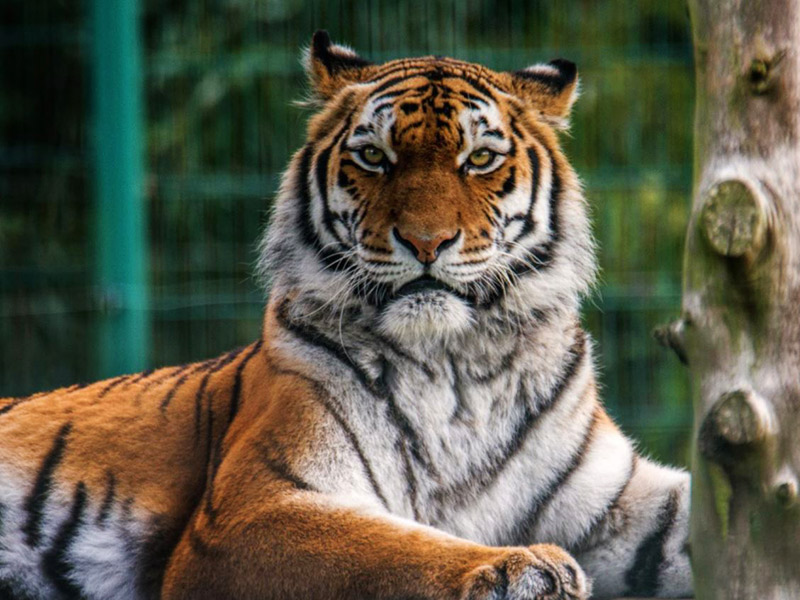Hurry! Become a member and save 20%!


Tiger (Amur)










There is a new home for Amur tigers and African lions at Blackpool Zoo. A new state-of-the-art home, Big Cat Habitat, has increased indoor space and a larger off-show management area will be complimented by extended external paddocks and improved keeper facilities, which will enable the best possible care for the magnificent animals. It officially opened on Friday 26th May 2023.
The Amur tiger (formerly known as the Siberian tiger) is the largest cat in the world and today, fewer than 400 are left in the wild and they can be found in the Russian Far East with a small number ranging across the border into China and possibly North Korea.
Tigers are primarily solitary animals, coming to together only to breed. They can live up to about 15 years in the wild and longer in captivity. In the wild, they catch and eat mostly deer and wild boar, but at the zoo they are fed a diet of rabbit, beef, chicken, vitamins and minerals. We operate a “starve day” once a week to replicate their dietary habits in the wild.
Originating from Northern Asia, this species has been hunted to the very edge of extinction. Poaching, loss of habitat to farming and deforestation and the sale of skins and body parts for traditional medicine have decimated their numbers. The Amur tiger is the largest cat in the world as well as one of the rarest.
We're proud to support the work of the Wildcat Conservation Alliance through our fundraising efforts in the zoo, you can read more about their work by heading to their website.
Get the best price!